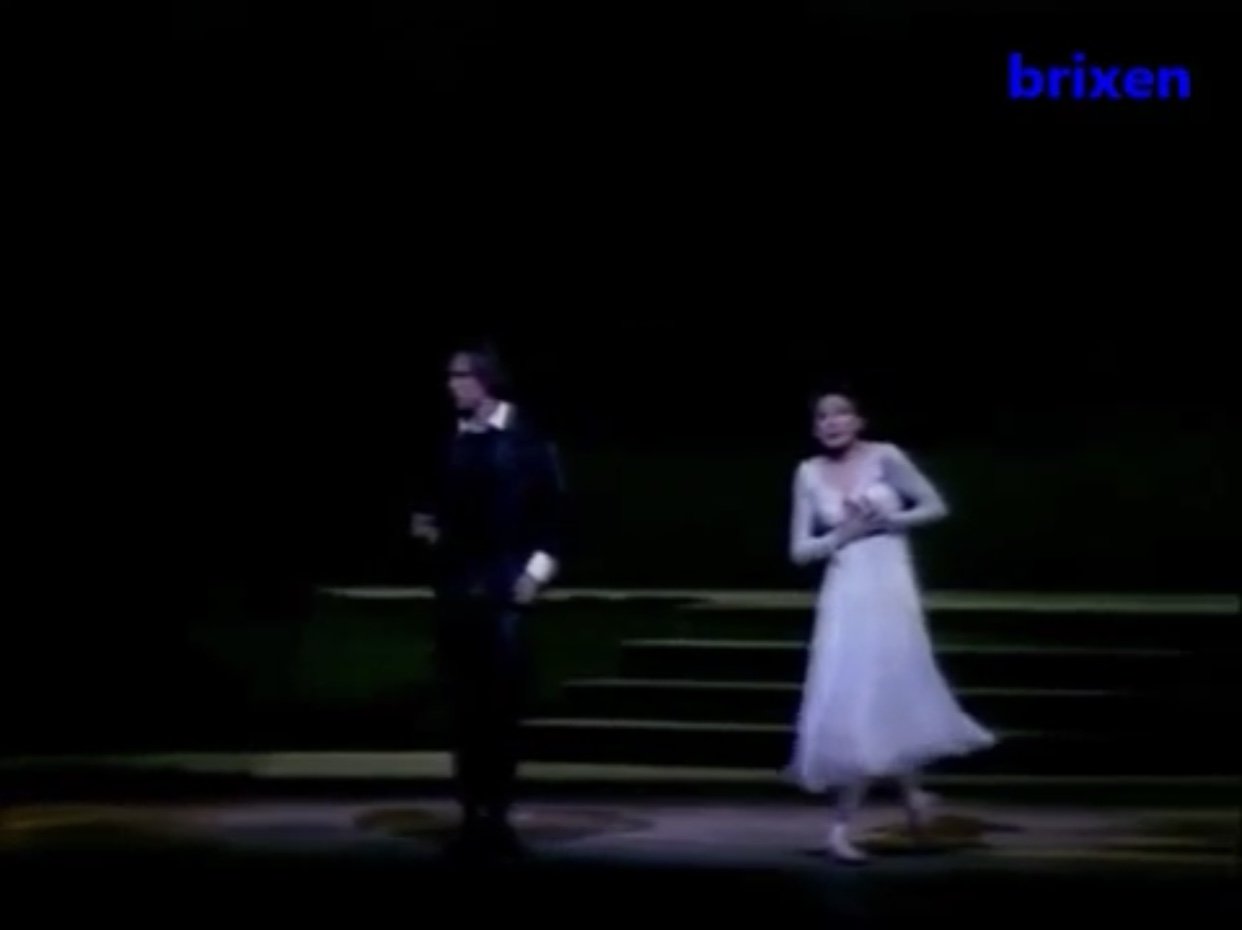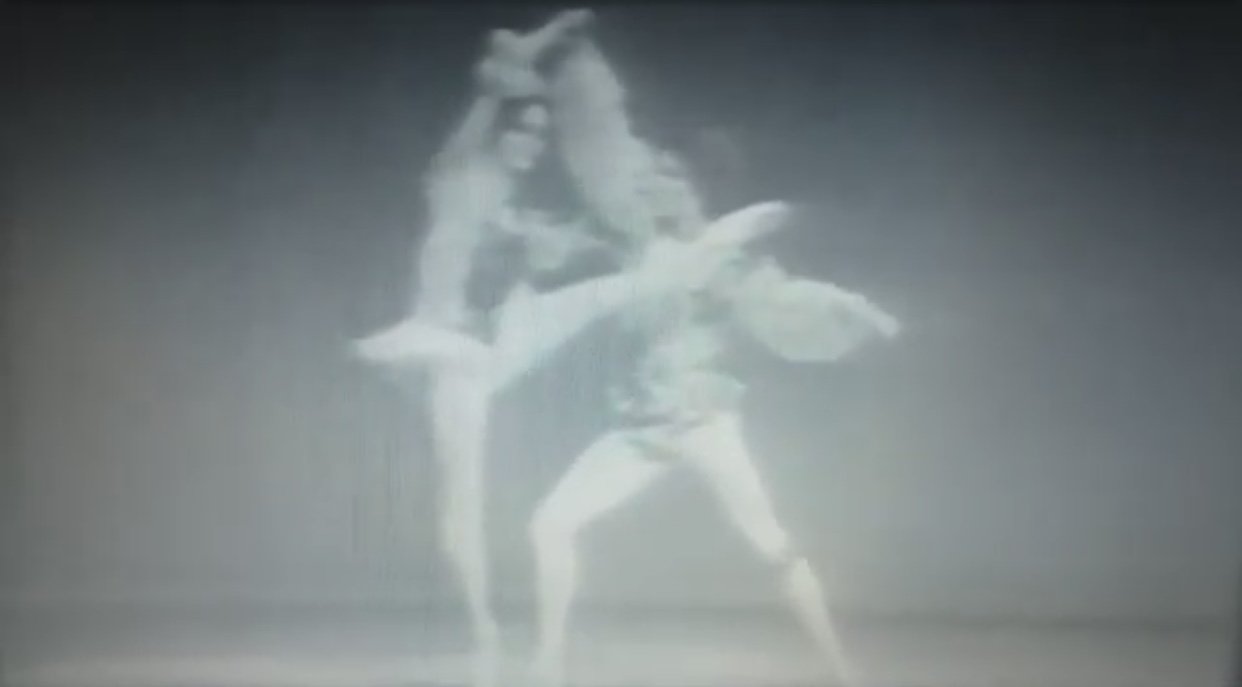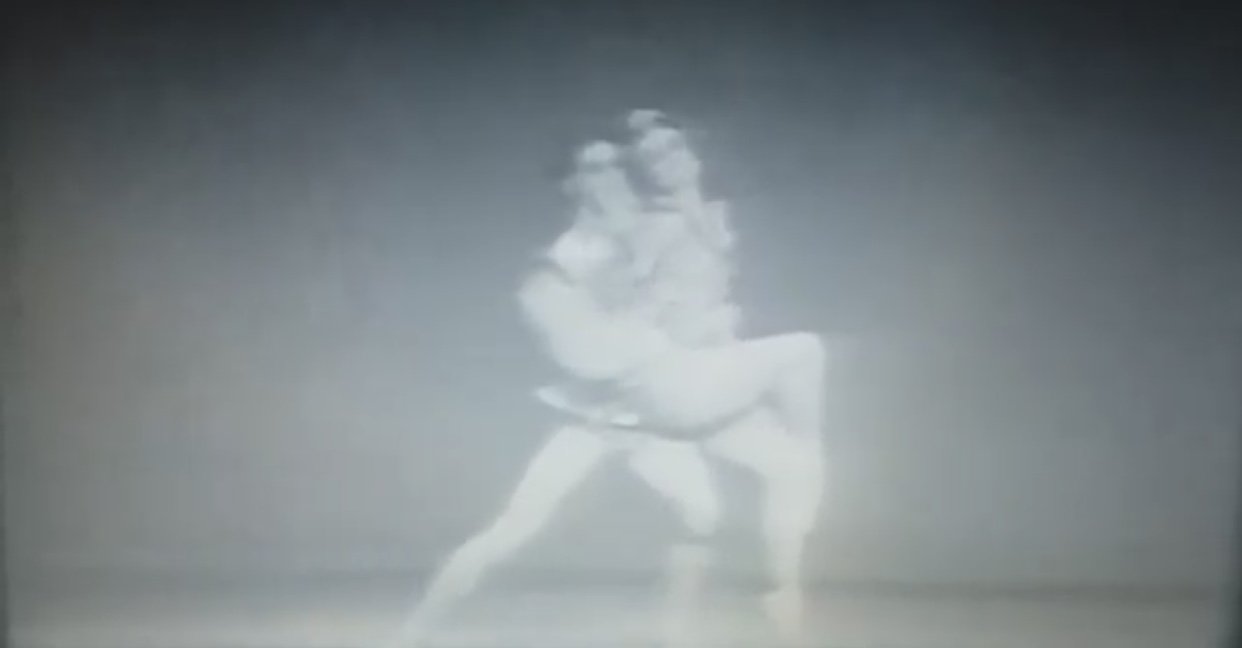Silver Jubilee Ballets - Ashton and MacMillan
Britain is currently being reminded that the queen’s platinum jubilee celebrations (seventy years) are the fourth jubilee celebrated by this monarch. Tonight - June 2, 2022 - the Royal Ballet gives the world premiere of Christopher Wheeldon’s three-act “Like Water for Chocolate”, which is the company’s second three-act world premiere this season (both with commissioned music and big-name designs); that’s also the third three-act creation by Wheeldon, composer Joby Talbot, and designer Bob Crowley - following their “Alice’s Adventures in Wonderland” (2011) and “The Winter’s Tale” (2014). It’s not, however, officially a jubilee event, though tonight’s world premiere occurs on today’s official-birthday public holiday.
Here I’d like to remember the May 30, 1977 gala for the queen’s silver jubilee. In the early evening, Queen Elizabeth and Prince Philip, arriving at Covent Garden, amazed viewers on television by leaving their car and doing an unprecedented walkabout in the Covent Garden district. (As I recall, walkabouts in which the queen stopped to make conversation with people in the crowd.) They, with other royals and leading politicians, then attended a televised gala of opera and ballet in the Royal Opera House, which included world premieres by both Frederick Ashton and Kenneth MacMillan. Margot Fonteyn, now fifty-eight, was Ophelia to Rudolf Nureyev’s Hamlet in Ashton’s new “Hamlet and Ophelia”; Lynn Seymour was (by implication, not name) Elizabeth I, with seven male courtiers, at least one of whom (Wayne Eagling) was evidently her private lover.
The opera fare included the trio from Mozart’s “Così fan tutte” (Elizabeth Harwood, Yvonne Minton, Richard van Allan), the patter duet from Donizetti’s “Don Pasquale” (Gabriel Bacquier, Geraint Evans), the grand scene honouring Queen Dido in Berlioz’s “The Trojans” (Josephine Veasey, with van Allan and Elizabeth Bainbridge), and King Philip’s soliloquy in Verdi’s “Don Carlo” (Boris Christoff); Colin Davis conducted. Most of these were permanent members of the Royal Opera company, though Evans, Harwood,
Minton, van Allan, and Veasey all had international careers; Christoff and Bacquier, international stars who often returned to Covent Garden, had been in the first casts of the Royal Opera productions of the operas from which they were singing classic numbers at this gala.
The ballet fare included Ashton’s complete “Symphonic Variations” (1946, now revived with Merle Park, David Wall, Jennifer Penney, Ann Jenner, Michael Coleman, Wayne Eagling) and “La Valse” (led by Georgina Parkinson, Vergie Derman, Monica Mason, Donald MacLeary, Stephen Jefferies, David Drew). Ashton was the ideal royal laureate: he made ballets and divertissements for successive royal events from at least 1953 (“Homage to the Queen”) to 1986 (“Nursery Suite”).
Neither of the world premieres enjoyed a long life. MacMillan, unlike Ashton, tended to be at his worst for special gala offerings; in autumn 1978, he made a disaster (“6.6.78”) for Sadler’s Wells Royal Ballet’s celebration of Ninette de Valois’s eightieth birthday. For this silver jubilee event, he was apparently following a royal suggestion that Britten’s choral dances for “Gloriana” might be good material, but it was known that “Gloriana” (much later recognised as a very good opera) had not been successful Royal fare at its world premiere in the 1953 coronation season. He was often good with modernist twentieth-century music (though it was Ashton to whom Britten returned), but seldom in ways that pleased polite audiences. This MacMillan “Gloriana” - designed by Yolanda Sonnabend so that Elizabeth Gloriana danced in coronet, red wig, and the top half of a farthingale over legs wearing nothing but tights and point shoes, and choreographed by MacMillan to show his fascination with the private lives of imperial high society - generally went down like the proverbial lead balloon: it went far further than Glenda Jackson’s then recent “Elizabeth R” series and other depictions in suggesting Elizabeth I had had an active sex life, and was totally against the mood expected of a silver jubilee event. (The Queen and Princess Margaret were known to have loved MacMillan’s “Romeo and Juliet”; the Queen Mother returned to watch it on her ninetieth birthday in 1990.) At the party after this 1977 Silver Jubilee gala, Deborah MacMillan has relayed how most of the audience bigwigs cut MacMillan dead - other than Denis Healey, then Chancellor of the Exchequer, who cheerfully told MacMillan how he’d enjoyed it. (To complicate matters, MacMillan had recently announced his resignation as Royal Ballet artistic director - he became resident choreographer instead, and was already preparing his three-act “Mayerling”.) The pas de deux for Seymour and Eagling was full of choreographic Ashtonisms (she clutches her own ankle in the splits à la “Monotones” and in arabesque parts her arms powerfully from en haut to lowered first-arabesque line continuing the line of the shoulders; but it was also MacMillan’s most acrobatically sexual pas de deux to date, with Gloriana’s legs splitting apart, often upended, in her lover/partner’s arms. When “Mayerling” returned to this vein of sexual contortion for a historic royal character the next year, the audience was ready; the gala audience for MacMillan’s “Gloriana” was unprepared. It was never danced again. Yet the pas de deux is now on YouTube, albeit in dim black and white: go to “Lynn Seymour Gloriana”.
Ashton, making “Hamlet and Ophelia”, was choreographing a Liszt score that Bronislava Nijinska, so influential on him, had staged in the 1930s (with herself as Hamlet). But Nijinska had not enjoyed a success with her “Hamlet”; and Ashton encountered problems in rehearsing his in 1977. Specifically, Nureyev, busy creating his own three-act “Romeo and Juliet”, never came to rehearsals. Ashton choreographed Hamlet’s role on Wayne Eagling, initially scaring him somewhat by telling him to throw Fonteyn around with some violence. Nureyev was known to be a super-quick study. In 1984, Ashton told me how he, just before the premiere, phoned Nureyev - not without scorn - to say “Margot’s happy to go on with Wayne; Wayne’s happy to go on with Margot; I’m MORE than happy for them to go on without you.” That did the trick: Nureyev came, quickly learnt the role, and danced the gala.
The pas de deux had some theatrically potent moments showing Ophelia’s sudden mental derangement; Fonteyn froze on point with glazed eyes staring front (see illustration 4), then gave the impression of psychological collapse by falling suddenly off point with a general loss of physical rigour. Fonteyn danced it again on the Royal Ballet’s 1978 American tour, now with Eagling. (Nureyev, busier than ever in the late 1970s, never repeated his role. But you can see most of this world premiere, in colour, on YouTube: go to “Hamlet Prelude - Ashton, Nureyev, Fonteyn, 1977/8”.) It’s a work of which Ashton spoke without pride; seven years after its premiere, I actually had to remind him of it. Still, Fonteyn’s best moments reveal the uncanny skill she and Ashton could conjure at this late stage in her career.
The gala’s performance of “Symphonic Variations”, again in dim black and white, can also be seen on YouTube: go to “Symphonic Variations - footage of a live performance, 1977” as posted by John Hall. In particular, at 8.45 - 9.15, notice the fabulous musical freedom shown by Merle Park in the prima’s solo, covering space and playing with music with a quality of lyrical play that Ashton loved: notice the perfect focus of her eyes, bringing changing spatial geometries into play.
At 9.15, she goes into the two-minute central pas de deux. The partnering here is the reason why male dancers from Anthony Dowell to Vadim Muntagirov have called this the most exhausting role in the entire ballet repertory: most of the lifts take the ballerina only inches off the floor, meaning the man must use muscles in his forearm while maintaining seeming serenity elsewhere. He - here the superlative David Wall, in his prime - lifts her in a circuit of lifts that at first resemble those for the Sanguinic ballerina in another 1946 masterpiece, Balanchine’s “The Four Temperaments”; both are manèges of grand jeté lifts taking a clockwise path around the stage with gesturing arms. But the Sanguinic ballerina only looks ahead: she’s conquering space like the prow of a galleon circumnavigating the globe. The lifts in “Symphonics”, by contrast, alternate in focus: every one that faces ahead is followed by one looking backward. So these are Janus lifts: facing ahead and behind, and by implication into the future and into the past, all while she, the ballerina (originally Fonteyn herself), is travelling around the space. She’s thus, to use Milton’s terms, allegro and penseroso, embodying both the life of action and of thought. No ballet makes more use of stillness than “Symphonic Variations”: movement and statuesque repose are repeatedly juxtaposed.
At several points with her partner, the ballerina shows that hallmark Ashton arabesque line so often copied by MacMillan. The arms, in profile to the audience, continue the downward flow of the shoulders; the raised leg echoes the slope of the back arm above it. And the head is raised with face and eyes gazing up, the throat exposed. This is the line that Anna Pavlova took from Isadora Duncan, who in turn took it from statues of Greek maenads. The image is one of ecstasy, even abandon; yet Ashton’s ballet sustains it calmly as if preserving it in amber, and so containing abandon within repose, stretching outward even while accepting and resting.
Thursday 2 June, 2022
@Alastair Macaulay 2022
1: Margot Fonteyn and Rudolf Nureyev in Ashton’s “Hamlet and Ophelia” (1977): screen-capture from YouTube.
2: Margot Fonteyn and Rudolf Nureyev in Ashton’s “Hamlet and Ophelia” (1977): screen-capture from YouTube.
3: Margot Fonteyn and Rudolf Nureyev in Ashton’s “Hamlet and Ophelia” (1977): screen-capture from YouTube.
4: Margot Fonteyn and Rudolf Nureyev in Ashton’s “Hamlet and Ophelia” (1977): screen-capture from YouTube. This moment of suddenly gazing stiffly out front, followed by a collapse off point, is one of the images with which Fonteyn and Ashton conveyed the spasm with which Ophelia’s mind became deranged.
5:Margot Fonteyn and Rudolf Nureyev in Ashton’s “Hamlet and Ophelia” (1977): screen-capture from YouTube.
6: Margot Fonteyn and Rudolf Nureyev in Ashton’s “Hamlet and Ophelia” (1977): screen-capture from YouTube.
7: Lynn Seymour and Wayne Eagling in the final pas de deux of Kenneth MacMillan’s “Gloriana” (1977). Screen-capture photograph from YouTube.
8: Lynn Seymour and Wayne Eagling in the final pas de deux of Kenneth MacMillan’s “Gloriana” (1977). Screen-capture photograph from YouTube.
9: Lynn Seymour and Wayne Eagling in the final pas de deux of Kenneth MacMillan’s “Gloriana” (1977). Screen-capture photograph from YouTube.
10: Lynn Seymour and Wayne Eagling in the final pas de deux of Kenneth MacMillan’s “Gloriana” (1977). Screen-capture photograph from YouTube.
11: Lynn Seymour and Wayne Eagling in the final pas de deux of Kenneth MacMillan’s “Gloriana” (1977). Screen-capture photograph from YouTube.
12: After the world premiere of MacMillan’s “Gloriana”, the BBC TV camera cuts to the Gsand Tier, Covent Garden, where Princess Margaret, the Queen, and the Queen Mother can be seen in a their regalia, Prince Philip with his medals. Screen-capture photograph from YouTube.











